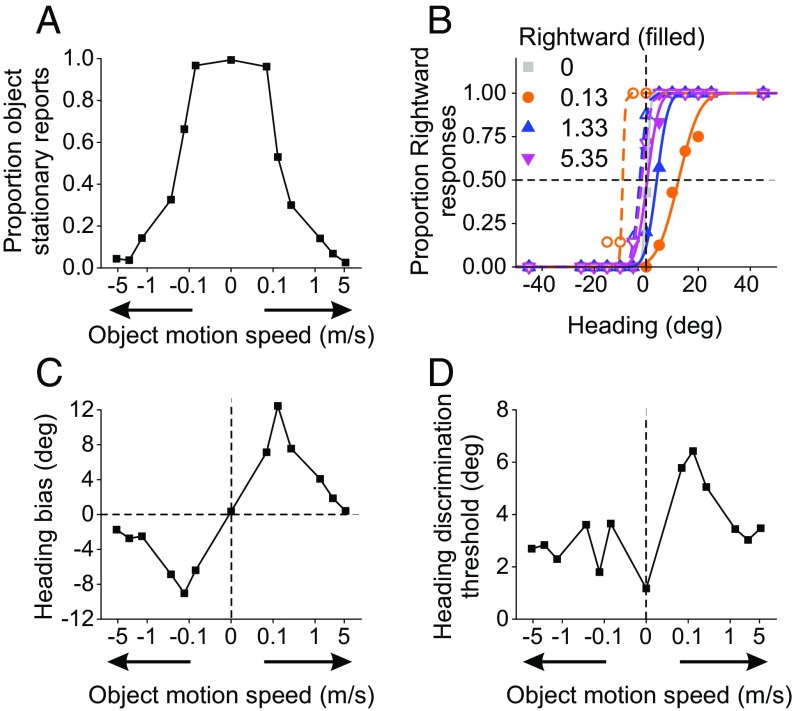Fig. 2.
Performance of a representative human subject. Data from the dual-report task are shown for the visual condition (no inertial motion). (A) Proportion of trials in which the subject perceived the object to be stationary in the world as a function of object speed in the world. Arrows on the x axis indicate rightward and leftward object motion. (B) Psychometric functions characterizing heading discrimination for different object speeds. Psychometric functions for rightward object motion at 0.13, 1.33, and 5.35 m/s shifted to the right by 12.44°, 4.08°, and 0.42°, respectively (solid curves with filled symbols). For leftward object motion (open symbols and dashed curves), psychometric functions shifted to the left by −9.06°, −2.50°, and −1.73° for object speeds of 0.13, 1.33, and 5.35 m/s, respectively. (C and D) Biases (C) and thresholds (D) computed from psychometric functions in B are plotted as a function of object motion speed.

